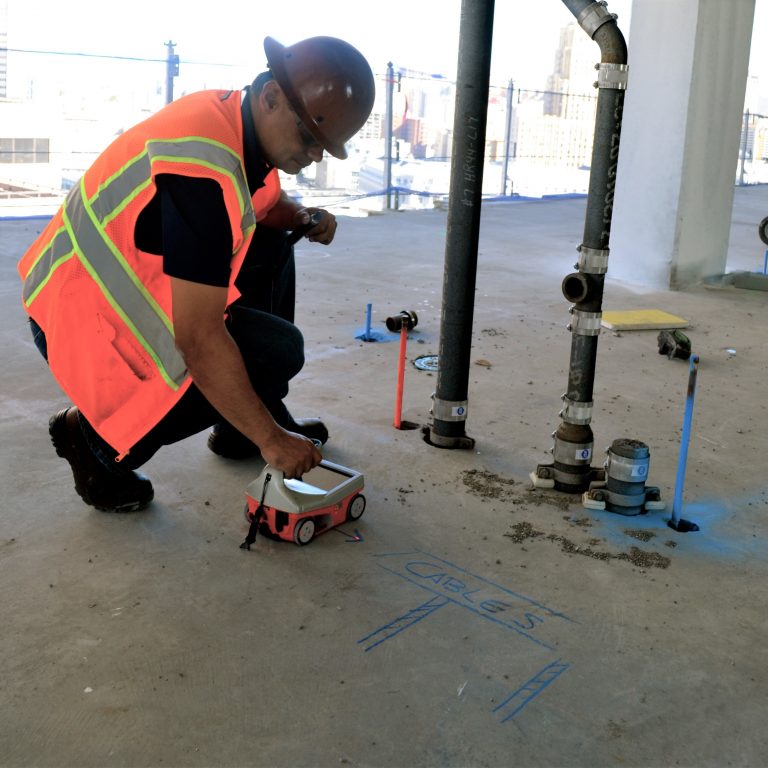Harness the Strategic Edge of Concrete Scanning for Unparalleled Task Success and High Quality Assurance
In the realm of modern-day building and construction and infrastructure development, the usage of concrete scanning modern technology has emerged as a pivotal tool for making sure task success and maintaining quality requirements. The real power of concrete scanning exists not just in its capacity to enhance job results yet additionally in its capacity to change conventional techniques, setting a brand-new benchmark for precision and effectiveness in the building and construction market.
The Significance of Concrete Scanning
Concrete scanning is a vital step in building and construction projects to make sure the safety and security and integrity of structures. By using various scanning technologies such as Ground Penetrating Radar (GPR) and electromagnetic induction, building groups can non-destructively evaluate the subsurface of concrete structures to determine possible threats like rebar, conduits, or post-tension cable televisions. This details is essential for project designers, service providers, and supervisors to make informed choices and stay clear of pricey errors during the building process.
One of the primary reasons that concrete scanning is so essential is its capacity to stop crashes and injuries on the building and construction website. Inadvertently reducing with an online electrical conduit or damaging post-tension cables can have disastrous effects, not just in regards to safety and security yet also in terms of project delays and economic implications. By carrying out comprehensive concrete scanning before any type of exploration, cutting, or coring tasks, building and construction groups can reduce threats and create a more secure working environment for every person involved.
Along with safety factors to consider, concrete scanning also plays a vital role in ensuring the long-lasting sturdiness and quality of the framework. By spotting any issues or abnormalities hidden beneath the surface area, such as gaps or delamination, early intervention can be carried out to attend to these issues prior to they intensify into more substantial issues. Eventually, purchasing concrete scanning is an aggressive action that can save time, money, and resources in the future, while likewise supporting the highest criteria of building excellence.
Advanced Innovation for Accurate Outcomes

By incorporating these sophisticated innovations right into concrete scanning practices, building groups can improve workflows, lower job hold-ups, and ensure the general top quality and success of the project. The precision and efficiency offered by these tools add substantially to the job's success by assisting in notified enhancing and decision-making top quality guarantee procedures.
Enhancing Job Effectiveness and Timelines

Moreover, concrete scanning makes it possible for groups to identify architectural weaknesses and prospective dangers beforehand, allowing for prompt remediation and avoiding accidents that might derail project timelines. The real-time data provided by scanning tools facilitates informed decision-making, leading to smoother coordination amongst various professions and stakeholders. This improved cooperation lessens disputes, enhances performance, and eventually speeds up job distribution.
Furthermore, by proactively attending to problems with concrete scanning, building and construction teams can stick to timetables much more successfully, minimize downtime, and enhance visit the website source allowance. The ability to discover concealed barriers and confirm architectural integrity effectively adds to overall task efficiency and timelines, making sure successful results and customer complete satisfaction.
Ensuring Safety and Risk Reduction

Risk reduction strategies can be improved via the comprehensive information supplied by concrete scanning, allowing task teams to make enlightened decisions that minimize the likelihood of unforeseen occurrences. In addition, by properly drawing up subsurface conditions, service providers can avoid expensive rework, hold-ups, and damage to existing structures, even more adding to overall project safety and success. Executing concrete scanning as a routine technique not only makes certain a much safer work setting yet also imparts confidence in stakeholders concerning the project's dedication to quality and risk management.
Quality Control Via Concrete Scanning
Concrete scanning plays a pivotal function in upholding quality control criteria within building jobs. By using innovative scanning modern technologies such as Ground Penetrating Radar (GPR) and Concrete X-ray, project supervisors and designers can make certain the stability and top quality of concrete structures. Via concrete scanning, possible flaws, such as spaces, fractures, or strengthening bar blockage, can be spotted non-destructively, permitting check this for prompt treatments to maintain the structural integrity of the project.
Quality assurance with concrete scanning not just assists in identifying existing issues but additionally allows proactive procedures to avoid future troubles that can endanger the safety and security and durability of the structure. By performing complete scans at essential stages of building, teams can validate the accuracy of architectural plans, confirm the placement of vital components, and resolve any kind of variances promptly. This positive method reduces rework, lowers costly hold-ups, and More about the author eventually brings about the distribution of high-quality, durable structures that fulfill or surpass sector requirements.
Final Thought
In verdict, concrete scanning plays a vital duty in guaranteeing job success, high quality, effectiveness, and safety assurance. The strategic side given by concrete scanning permits for aggressive threat mitigation and enhances overall project administration.
In the realm of modern-day building and framework development, the use of concrete scanning modern technology has emerged as a crucial tool for guaranteeing task success and preserving quality criteria. By integrating these advanced modern technologies right into concrete scanning techniques, building groups can simplify process, decrease project delays, and make sure the general top quality and success of the project.Provided the vital nature of project effectiveness and timelines in construction management, the emphasis now shifts towards making certain safety and security and mitigating risks within the project setting.Concrete scanning plays an essential function in supporting top quality assurance requirements within building jobs. By using innovative scanning technologies such as Ground Permeating Radar (GPR) and Concrete X-ray, task managers and engineers can ensure the honesty and quality of concrete structures.